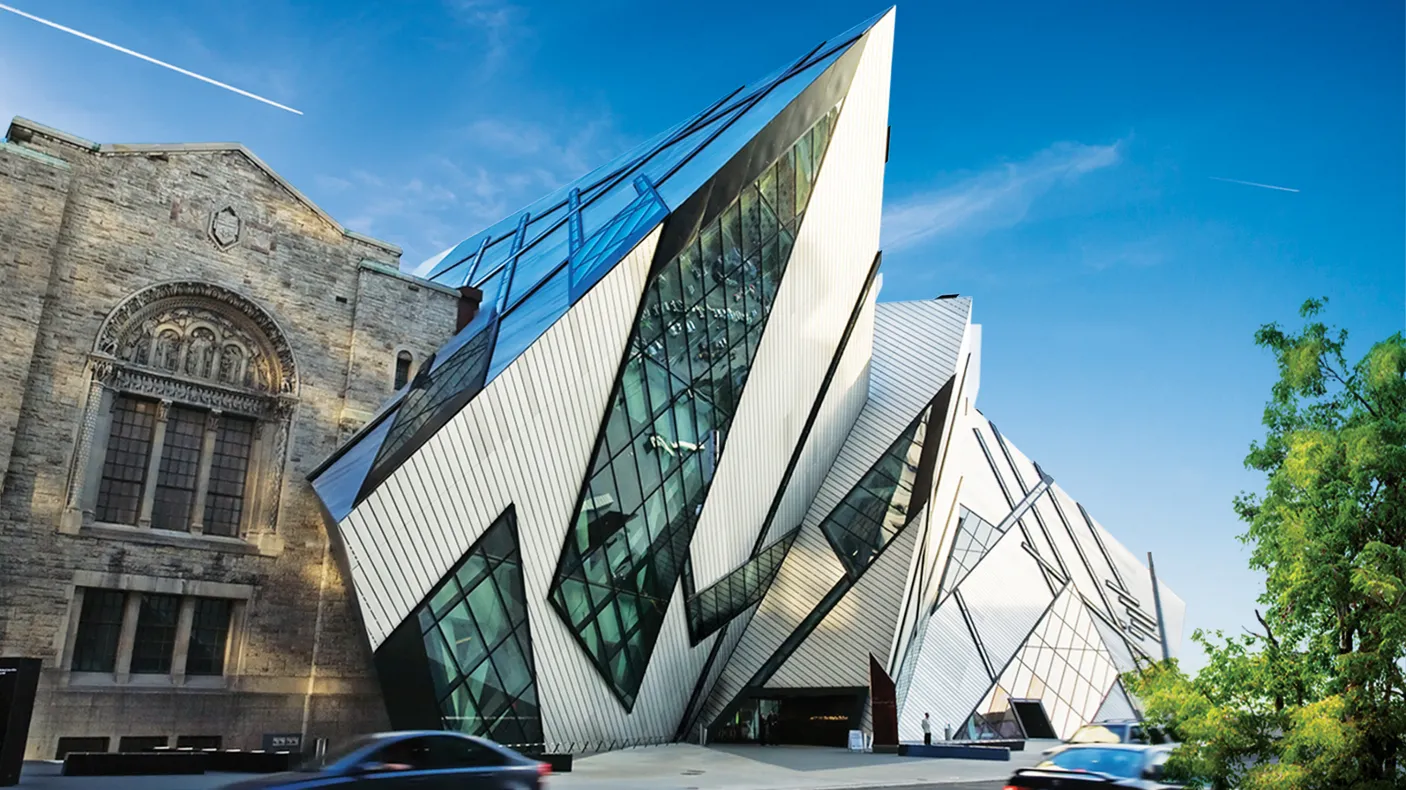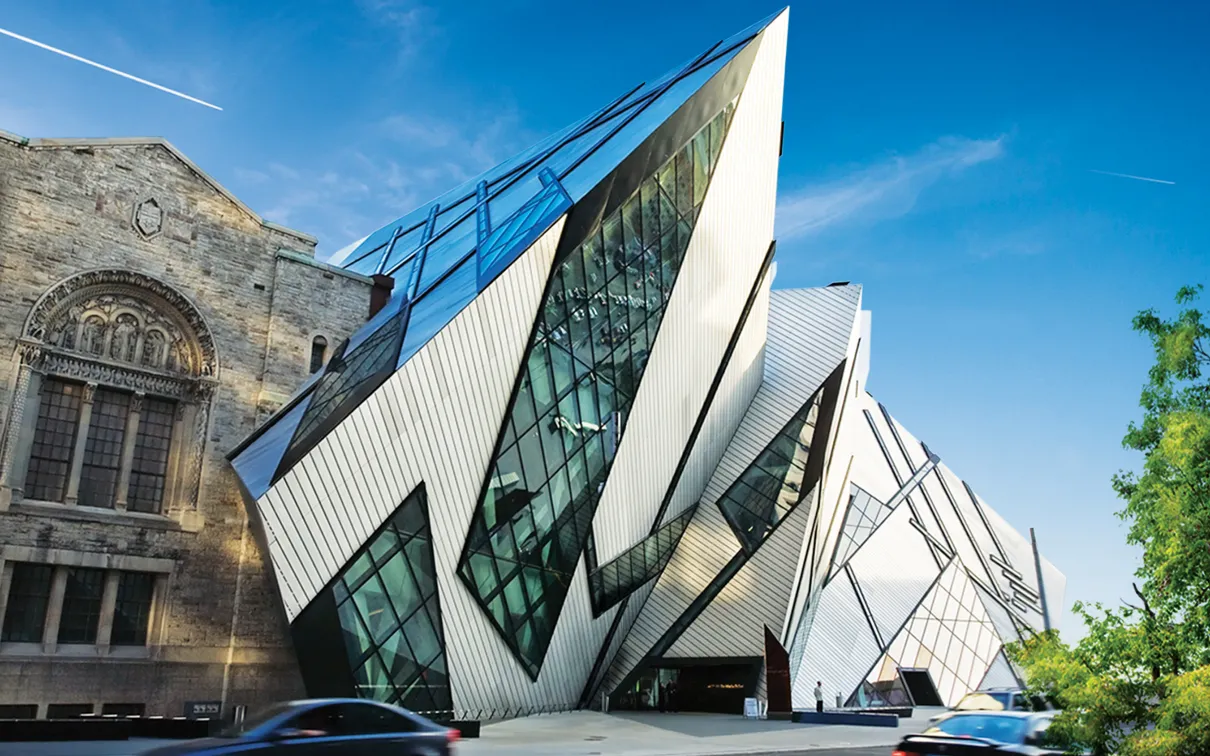Massive Barosaurus skeleton discovered at the ROM
Published
Category
Press Release
New ROM Curator reveals the rare skeleton of “Gordo”, the largest dinosaur ever to be displayed in Canada
The Royal Ontario Museum (ROM) held a news conference today to announce the unusual discovery of a massive Barosaurus skeleton in the Museum’s own collections. The skeleton will form the centerpiece of the ROM’s new James and Louise Temerty Galleries of the Age of Dinosaurs, opening the weekend of December 15 and 16, 2007 on Level 2 of the Michael Lee-Chin Crystal. When completed and installed, the Barosaurus will be the largest dinosaur on permanent display in Canada.
The Barosaurus will stretch along the north wall of the east Crystal in the Temerty Galleries, where it will be visible from Bloor Street through the angular windows. When installed, the ROM’s Barosaurus will be the only sauropod skeleton consisting largely of real fossil bone mounted in Canada, as well as the largest dinosaur skeleton on display in the country. It will also be the only 'real' Barosaurus mounted in a life pose in the world. (The American Museum of Natural History has a cast skeleton mounted, and a vertebral column in a glass floor.)
"This is a fascinating and somewhat humorous story, and one the Museum is extremely pleased to tell,” said the ROM’s Director and CEO William Thorsell.
Dr. David Evans, new Associate Curator of Vertebrate Palaeontology in the ROM’s Department of Natural History, found the ultimate “skeleton in the closet.” Arriving in May 2007 to head up the ROM’s dinosaur research program, one of his first jobs was to find a sauropod dinosaur for display in the new Age of Dinosaurs gallery. The ROM’s new gallery already included excellent specimens of three of the four most recognizable dinosaur types – T.Rex, Triceratops, and Stegasaurus – but none of the largest dinosaurs, the sauropods.
After spending months investigating options, including purchasing a cast or even digging one up, Evans found what he was looking for in an unexpected place. While on a related trip to Wyoming, he was reading an article by famed sauropod expert Jack McIntosh when something caught his eye -- a reference to a Barosaurus skeleton at the ROM. The ROM’s databases turned up a blank, but after connecting the disparate dinosaur dots Evans was able to show that what were thought to be isolated bones scattered throughout the collections room actually belonged to a single dinosaur.
"It was an exciting day,” says Evans. “We were searching for an iconic sauropod skeleton, and we had one under our noses the whole time. When all the parts were pulled together, we realized just how much of the animal the ROM actually had -- the better part of a skeleton of a rare, giant, dinosaur.”
The Barosaurus skeleton includes four massive neck vertebrae, a complete set of vertebrae from the back, the pelvis, 14 tail vertebrae, both upper arm bones, both thigh bones (each of which is over 140 cm (55 inches) in length), a lower leg, and various other pieces. The entire assembled skeleton is approximately 27 metres (90 feet) in length, and when alive the animal would have weighed as much as 15,000 kilograms (15 tonnes).
This is the type of dinosaur that comes to mind when people think about dinosaurs. Its huge size and instantly recognizable long neck and long tail will capture people’s imagination,” says Evans, “It will be a spectacular addition to the Age of Dinosaurs gallery.”
Barosaurus is part of a group called sauropods, which includes the largest animals ever to walk on land. The group includes the well-known dinosaurs Apatosaurus (formerly known as Brontosaurus), Brachiosaurus and Diplodocus. The largest sauropods reached 30 metres (98 feet) in length and weighed over 50,000 kilograms (50 tonnes). Barosaurus lived in North America during the Late Jurassic period, about 150 million years ago. It is distinguished from other sauropods by its very long neck.
The skeleton is from the Morrison Formation, and was collected by the Carnegie Museum from what is now Dinosaur National Monument, Utah, in the early part of the 20th century. The skeleton was acquired by the ROM in 1962 through a trade organized by former ROM Curator Dr. Gordon Edmund with the intention of installing it in the 1970 dinosaur gallery renovation. The Museum traded, among other things, two duck-billed dinosaur skeletons for what was then thought to be a Diplodocus, an identification that was later corrected by sauropod expert Jack McIntosh. Due to a lack of space the Barosaurus did not make it into the 1970 gallery. After Dr. Edmund retired in 1990 its story was forgotten, and all its pieces were separated on different shelves and in different drawers in the ROM’s collection room through various moves of the collections made by the construction of the Louise Hawley Stone Curatorial Centre in the early 1980s.
By mounting this massive sauropod, the ROM brings Dr. Edmund’s 40 year-old dream to reality, but unfortunately only after his passing. To recognize his vision, the Museum has affectionately nicknamed the specimen "Gordo" in his honour. Gordo also means “fat” in Spanish, a fitting name for an animal of such substantial size.


